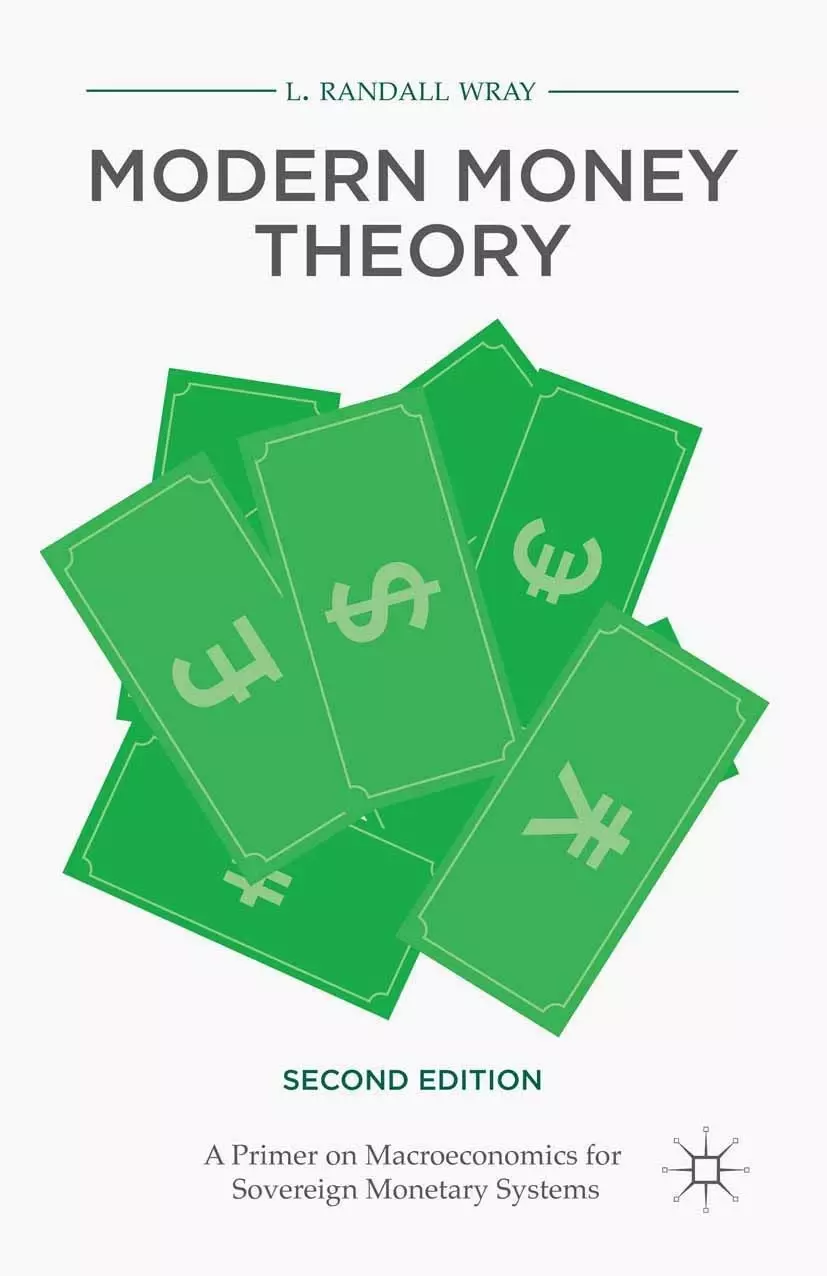Modern Money Theory
L. Randall Wray
"Modern Money Theory", L. Randall Wray
Economic policy desperately and urgently needs a new heterodox theory of money to replace the category error of financial orthodoxy that governments must balance budgets like households, which in turn imposes austerity to try (unsuccessfully) to eliminate deficits. Randall Wray rightly affirms that a sovereign state can issue its own currency, and that this policy should be activated to reach full potential output and eliminate austerity. He also correctly claims that taxation is a tool of aggregate demand management, and not a means of balancing government budgets. So far, so good.
Beyond that, Wray’s specification of MMT does not completely provide a valid or viable definition of this necessary new heterodox theory of money. His primer, written for students, adopts a patronising and didactic style, which is not ideal for debate with academic peers. He frequently makes statements and immediately renders them as ‘conclusions’. A prime example is in making his claim that taxation drives money value, when he too lightly dismisses the alternative claim that widespread acceptance of money against goods, services, assets, raw materials, land etc establishes its value (p47). Confidence in the value of money would evaporate more immediately if it were no longer accepted to buy goods and services, than if it were no longer accepted to pay taxation.
Wray’s core argument is trivial. His analytic is based on his opening exposition of the sectoral balances’ identity owed to Wynne Godley (and Francis Cripps whom Wray fails to mention). That is, if we assume that all money, created and existent, is quintessentially debt (and Wray does insist on this eg it’s ‘all IOUs’ (p7), ‘it all goes back to a loan’ (p60)), and we insist on double entry accounting at the macroeconomic level, then it’s trivial to show that all sector financial balances add to zero. Based on this analytic, Wray works through a variety of simulations of possible interactions within this constraint of the balances. Wray’s analysis, as he admits, is all ‘accounting’ (p9, 14, 57, 58), despite Keynes’s frequent scepticism of the application of accounting to economic analysis.
The problem is that it is an identity which Godley observed, not an equation. It has neither explanatory nor predictive power. There is no direct causal link between these sector balances. A change in one balance does not directly lead to an offsetting change in the other two. Yet Wray often argues as though such a direct causal connection exists. This is because he fails to provide any associated macroeconomic model to his MMT theory. There is no consumption function, no production function, no macroeconomic variables of employment, output, consumption, investment, government expenditure, exports, imports, nor parameters of price and wage. An exogenous change in any economic parameter will, of course, work its way through such an economic model, and not just shift money from one sectoral balance to another. Though the balances will automatically sum to zero, they may resolve at very different levels following a dynamic economic change. Neither does Wray explain this core variable to MMT, ie the total value of the three sector balances as they shift in an apparent sine-wave cycle over time (roughly between 5% and 10% of GDP in the UK economy).
Wray’s prime policy proposal is Job Guarantee, but he doesn’t show specifically how this fits within his MMT theory, apart from MMT making JG affordable, or within a general macroeconomic model. He offers no other macroeconomic policy proposal.
Wray’s other key opening point is the definition of money as debt, and the endorsement of double entry accounting at macroeconomic level, so that for Wray, money creation must equal new debt. But just as a sovereign state can create money, so it can do so without assuming debt. This is already the case with cash, which although only 3% of the money base, is issued without the sale of any corresponding government bond, or the assumption of any debt. So why not with other money creation? It’s not difficult to imagine an economic world in which money was issued up to the constraint of available real resources, as MMT allows, but without the cumulative mountains of debt which characterise the current economic model. These debt mountains are unrepayable, but do impose substantial financing costs (£39bn annually in the UK economy), which could easily be avoided. It might sound equally trivial to refer to the board game of Monopoly (which Wray’s colleague Stephanie Kelton does in her 2020 book ‘The Deficit Myth’), but in this game, the bank simply allocates starting money to each player, and it works! In the current context of the 2020 Coronavirus pandemic, we should ask why the Bank of England is treating its £645bn stimulus package as debt by the sale of government bonds, rather than simply issuing the money?
Wray later cites Rick Wolff fingering the reduction in real wage, supplemented by fast growth in household indebtedness as the likely cause of crisis (p251). This suggests an income rather than an employment problem. There is currently sufficient employment, but insufficient income in the system. Its antidote is basic income, not job guarantee, but Wray does not explore this alternative. There is common ground here in that sovereign money can fund job guarantee or basic income, but allowing sovereign money to be debt-free avoids the necessity of the questionable interpretation and application of Godley’s sectoral balance identity.
The book is available here.
Geoff Crocker
Editor ‘The Case for Universal Basic Income’
www.ubi.org

